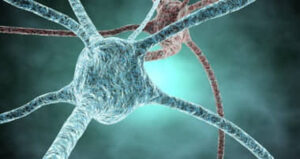
I’ve heard the phrase “neurons that fire together wire together” more times than I can count since starting at SuperCamp in March. But what does this phrase mean, and why do I hear it so often?
Plagued by these questions, I went in search of answers. I’d like to share them here to give you a window into our world and why SuperCamp is structured the way it is.
The Origins of the Phrase in Neuropsychology
Although I wish we could claim it as our own, SuperCamp did not coin “neurons that fire together wire together.” This clever phrase was first used in 1949 by Donald Hebb, a Canadian neuropsychologist known for his work in the field of associative learning.
Hebb’s axiom reminds us that every experience, thought, feeling, and physical sensation triggers thousands of neurons, which form a neural network. When you repeat an experience over and over, the brain learns to trigger the same neurons each time.
Examples of the Neural Network in Action
It can be beneficial to have neurons wired together. The neural network helps us learn, store, and recall information in an effective way. For example, when you’re getting to know an acquaintance, the neural network helps you to remember the person’s name through many subtle triggers.
However, the network can go awry when we try to unwire or rewire neurons to respond to a situation in a new way. A tragic example would be a child who has suffered abuse. Physical contact of any kind might be enough to trigger a fight-or-flight response, even when it isn’t appropriate.
What Hebb’s Axiom Means for Academics
When a student has a poor classroom experience on a regular basis—perhaps they’re bored by the curriculum, or a teacher shames them repeatedly in class—the student begins to think of academics as something negative.
Over time, the negativity becomes embedded in the student’s neural networks, and they learn to respond to school on the basis of that negativity, often by mentally checking out.
How We Use Hebb’s Axiom at SuperCamp
Unfortunately, many students associate academics with boredom and anxiety. Teachers and parents try to bring the joy back into learning, but it’s a difficult mindset to change, as you probably know.
Yet again and again, in a matter of seven to ten days, SuperCamp breaks through mental barriers and rekindles students’ love for learning.
How do we do it?
First of all we recognize that children are born wanting to learn, and for many years they love learning. Their learning in those early years is fueled by curiosity and joy. They’re eager to discover everything they can about their world, and they’re not afraid of making mistakes—that’s how they grow!
At SuperCamp we give that joy of learning back to students and a lot of what we do relates to rewiring their neural networks. We do this by putting them in a brand new environment and teaching them in brand new ways.
Instead of lecturing students at a whiteboard, which is sure to shut many of them down, we take a dynamic, fluid approach to teaching. We play games. We move our bodies. We listen to music. As students do all this and more, it sends signals to their neural network, saying in effect, “Hey! Learning isn’t what you thought. Learning is fun!”
How SuperCamp Affects the Brain Long Term
By the end of camp, new connections have been made in the brain, and students return home with a positive attitude about learning. Students find that even a traditional classroom setting feels more engaging and enjoyable than before and academics comes more easily.
This is part of “the SuperCamp shift,” and it’s a major focus of our programs and curriculum development. We want to inspire your child not just for a summer or for an academic year, but for a lifetime of learning.
“Neurons that fire together wire together.” It’s a simple concept, yet the ramifications are huge for your child. For more information about SuperCamp and how it can change your child’s life, contact our enrollment specialists at 800-228-5327 or request an information packet.
Photo courtesy of juliendn.
